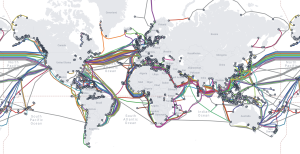The Future of Satellites: Revolutionizing Global Connectivity
The future of satellites is poised to revolutionize global connectivity, enabling faster and more reliable communication services. With advancements in space technology, satellites are becoming increasingly important for a wide range of applications, from navigation and communication to weather forecasting and Earth observation. The focus keyword Future of satellites is an essential aspect of understanding the rapidly evolving landscape of space technology and its impact on our daily lives.
Satellites have been a crucial part of modern technology for decades, providing essential services such as GPS navigation, television broadcasting, and weather forecasting. However, the future of satellites holds even more promise, with the potential to enable global connectivity, facilitate international communication, and support a wide range of industries, including finance, healthcare, and education. The use of satellites in global connectivity is a significant area of research and development, with many companies and organizations investing heavily in the development of new satellite technologies.
Advancements in Space Technology
Recent advancements in space technology have paved the way for the development of more advanced satellites, capable of providing higher-speed data transmission, greater connectivity, and more precise navigation. The use of space technology in satellites has enabled the creation of smaller, more efficient, and more cost-effective satellites, making it possible for a wider range of organizations and individuals to access space. One of the key areas of research and development in space technology is the use of low Earth orbit (LEO) satellites, which offer several advantages over traditional geostationary satellites, including lower latency, higher bandwidth, and greater flexibility.
The development of reusable rockets has also been a significant factor in the advancement of space technology, enabling the launch of satellites at a lower cost and with greater frequency. This has opened up new opportunities for the use of satellites in a wide range of applications, from Earth observation and weather forecasting to communication and navigation. The use of satellites in Earth observation has enabled scientists to study the Earth’s climate, weather patterns, and natural resources, providing valuable insights into the health of our planet.
Applications of Satellites
Satellites have a wide range of applications, from navigation and communication to weather forecasting and Earth observation. The use of satellites in navigation has enabled the development of GPS technology, which has revolutionized the way we travel and navigate. Satellites are also used in communication, providing essential services such as television broadcasting, telephone communication, and internet connectivity.
The use of satellites in weather forecasting has enabled scientists to study the Earth’s weather patterns, providing valuable insights into the formation of storms, hurricanes, and other severe weather events. Satellites are also used in Earth observation, enabling scientists to study the Earth’s climate, natural resources, and environmental health. The use of satellites in environmental monitoring has enabled scientists to track the health of our planet, providing valuable insights into the impact of human activity on the environment.
Challenges and Opportunities
Despite the many advantages of satellites, there are also several challenges and opportunities that need to be addressed. One of the key challenges facing the satellite industry is the issue of space debris, which poses a significant threat to the safety and operation of satellites in orbit. The development of sustainable space technologies is essential to mitigating the impact of space debris and ensuring the long-term sustainability of space exploration.
Another challenge facing the satellite industry is the issue of regulation, which can often be complex and unclear. The development of clear and consistent regulations is essential to enabling the growth and development of the satellite industry, while also ensuring the safety and security of space exploration. The use of satellites in international cooperation has enabled countries to work together to address common challenges and opportunities, providing a framework for cooperation and collaboration in space exploration.


